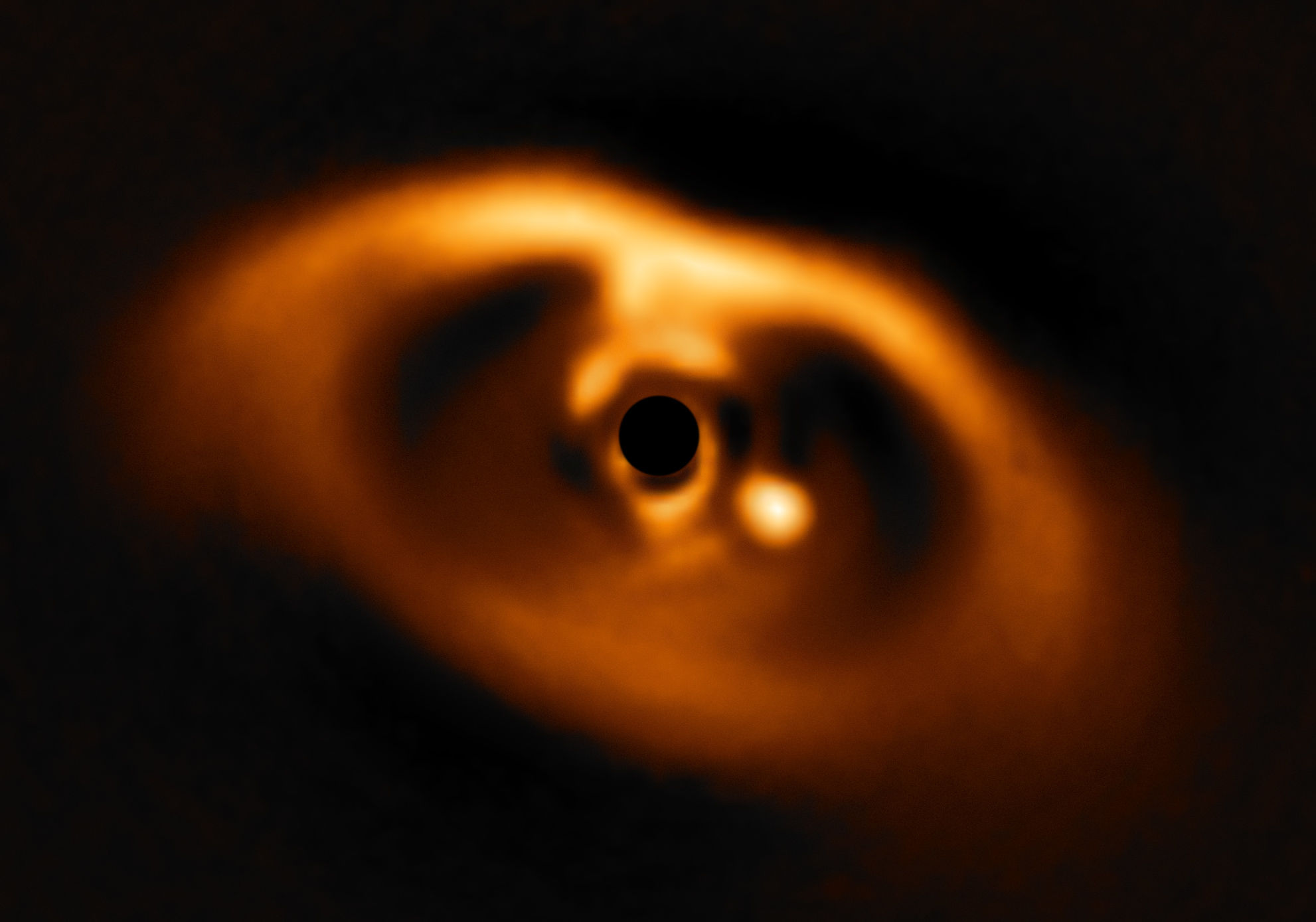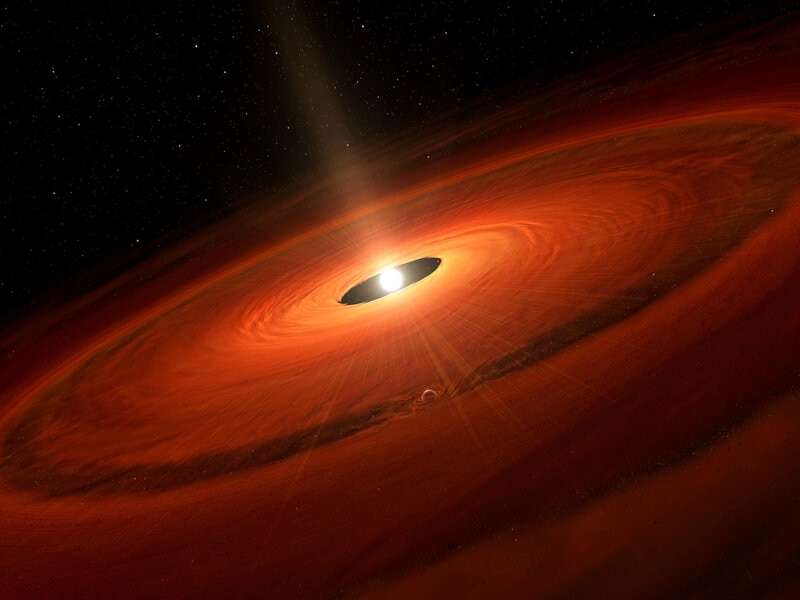Create a free profile to get unlimited access to exclusive videos, sweepstakes, and more!
Eating an asteroid a year helps a baby planet grow

Astronomers have discovered nearly 4,000 exoplanets — alien worlds orbiting other stars — as I write this. Most are old, like Earth, billions of years into their existence. Some are young, only tens or hundreds of millions of years old, and still glowing from the heat of their formation.
And a few — a very few — are even younger. We see them just after they’ve finished forming.
Even rarer? Seeing one while it’s still growing, still in the very act of forming. But it’s been done: That planet is called PDS 70b, orbiting a star about 370 light years away. The star is only about 5.4 million years old, so the planet is probably a little younger even than that!
It was only announced earlier this year, after having been suspected to exist for a while. The star is surrounded by a wide disk of gas and dust called a protoplanetary disk, and as the name implies planets grow out of this material. The disk was seen years ago, and astronomers were suspicious a planet was there because there’s a huge gap in the disk, stretching from about 2.5 to 8 billion kilometers out. A big planet forming in the disk could be gobbling up material, pulling it in with its gravity. As it does so it would move inward toward the star — this process acts like drag, stealing energy from the orbital motion of the planet, dropping it down.
It was a big deal when PDS 70b was found then! And it actually was toward the inner part of the gap, just as you’d expect. Models of how hot a planet should be at that age indicate it’s 5-12 times the mass of Jupiter. Given its location, it’s likely to still be growing, still accreting material from the disk around it, and that was also indicated by the presence of warm gas around it, heated as it falls onto the planet.
And now, new observations have not only confirmed it’s still growing, but also how fast. It appears that it’s eating somewhere between one-billionth to one ten-millionth the mass of Jupiter every year. That may not sound like a lot, Jupiter is a big planet, so this is a pretty opulent meal. For comparison, Ceres is the largest asteroid in our solar system (and is better called a protoplanet itself, as it was growing pretty well in the early days before running out of food), and on the fast end of the calculated range,this exoplanet PDS 70b is gaining about one Ceres’ worth of mass every couple of months. Even at the slow end of the estimated range it’s about the mass of Ceres every 20 years, which is still a lot.
The astronomers measured this by looking at the light from hydrogen gas. This gas is prevalent in the protoplanetary disk out by the planet, a little over 3 billion kilometers from the star. As it falls in to the planet it piles up, and stuff falling from farther out slams into it, creating shock waves. These warm up the gas, causing it to glow at characteristic wavelengths (colors). One of these wavelengths is called H-alpha, and is in the red part of the spectrum.
The amount of H-alpha light seen is proportional to the amount of gas falling onto the planet, so by measuring how bright the planet appears to be in this light, they could find how much stuff is falling onto it. There are a few uncertainties — for example, the protoplanetary disk is loaded with dust, which absorbs light, so there might be more H-alpha being emitted but is blocked by the disk itself. This is also an incredibly difficult observation, because the planet is very close to the star, requiring a big telescope and very high-resolution images to measure the light. That’s why the range of the growth rate is so wide.
So while the actual rate is uncertain, the important thing is that this growth, implied by the emission of light, has been detected at all! That’s pretty amazing. Incidentally, even though in human terms the rate of growth is a lot, by planetary standards it’s actually more of a nibble. PDS 70b is at least 5 times the mass of Jupiter, and only 5 million years old, so at some point the mass accretion rate must have been a LOT higher, by at least a factor of ten if not more. It may be delicately eating snacks now, but it used to be shoveling huge fistfuls of food into its face not too long ago.
Exoplanetary science is still very young; the first exoplanet was only discovered back in 1992. And now we know of thousands of such objects, and not only that we’re seeing them as they form. This technique of looking at the light from hydrogen in such detail has only been available a few years itself, and has been done just once before (for exoplanets orbiting the star LkCa 15).
But this sort of thing only gets better. Now that we know it can be done, it’ll be improved upon, and we’ll start to see even more planets as they grow.
I can’t tell you the thrill it is to read about something like this. Our understanding of the Universe sometimes grows in big strides, and in the field of exoplanets we’re making giant leaps.
Science! I love this stuff.




























